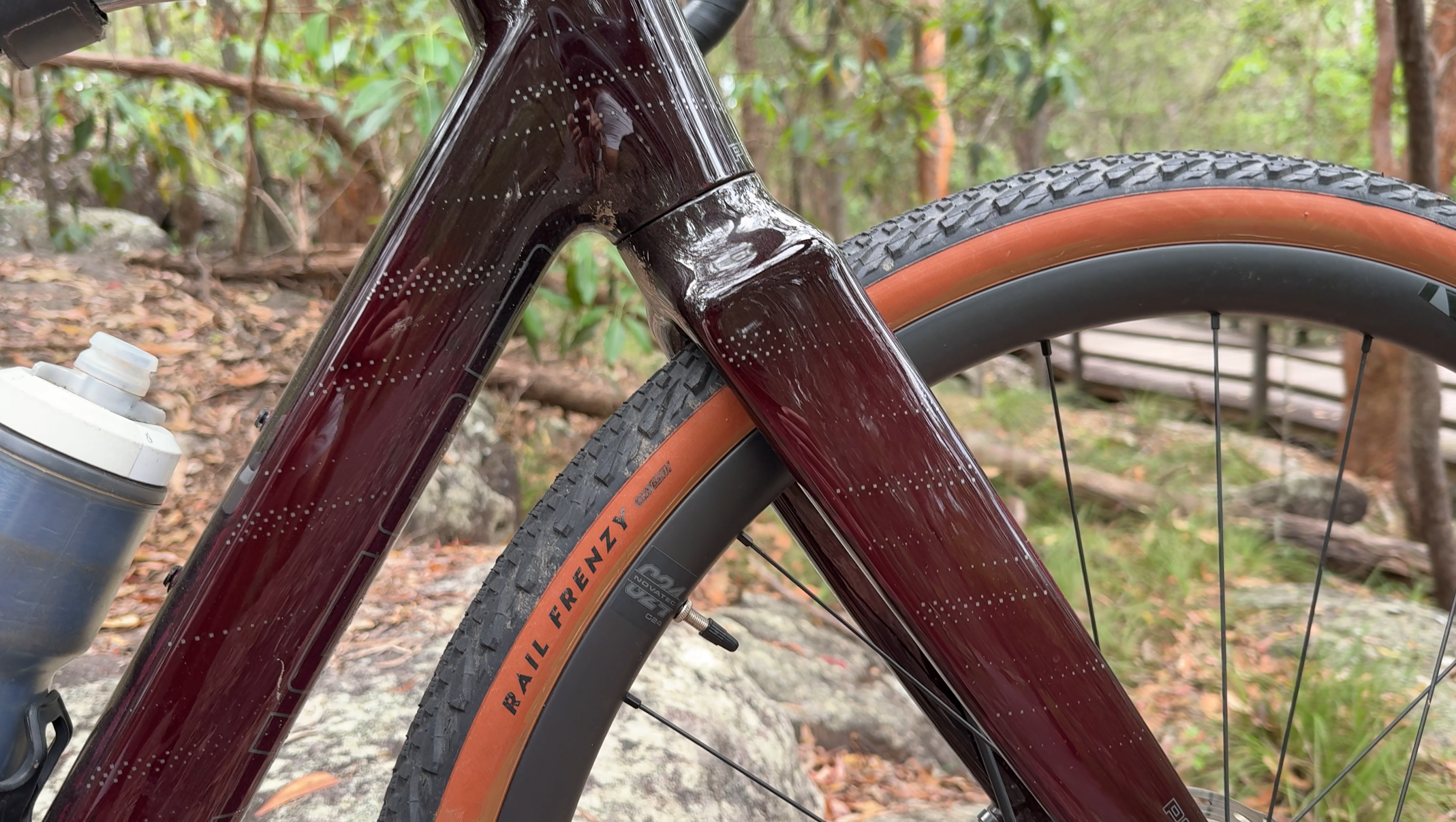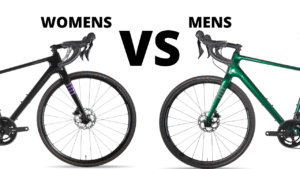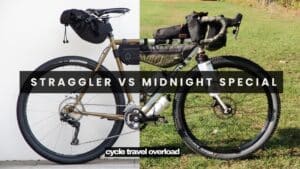Updated: 6th February 2024
Since coming from a roadie background this is a lesson I had to learn when making the transition to more supple tires.
Typically road bike tires run 80 to 120 PSI but for gravel-type tires, this pressure is so much lower. In this article, I am not going to be able to give you a hard and fast number that is exact. Because there are a few variables and each case will be different.
What PSI should a gravel bike be?
The ideal range for gravel tires seems to be anywhere from 15 to 50 PSI. But even sometimes 50 is getting to the too high range for a gravel tire.
You need to consider your weight and the bike’s weight with what you are carrying (front /rear weight distribution), the width of your tire, along the type of terrain or coarseness of gravel you intend to ride.
Recommended Starting Points for Gravel Bike Tire Pressures
For 35-38mm Tires: Begin around 40 psi, adjusting based on load and terrain. It’s common to set the front tire slightly lower, around 37 to 35 psi, for improved control.
For 40-45mm Tires: Start at 35 psi in the rear and 30 psi in the front. Adjust based on feedback from the trail—increasing for rim protection or decreasing for extra compliance.
For Tires Over 50mm: These offer great fun and versatility. Starting at 30 psi and adjusting down based on conditions allows for exploration of tire suppleness without compromising efficiency.
Key Considerations for Optimal Gravel Bike Tire Pressure
Deciding on the optimal tire pressure for your gravel bike involves balancing numerous factors to enhance performance, comfort, and durability. Here is a comprehensive list of considerations:
Total System Weight (Rider + Bike + Gear): Heavier loads require higher pressure to prevent rim strikes and maintain tire structure.
Surface Condition: Different terrains demand varying pressures for optimal traction and comfort. Softer, more technical terrains typically benefit from lower pressures.
Measured Tire Width: Wider tires can generally be run at lower pressures than narrower ones due to their larger volume and contact area.
Wheel Diameter: Affects the tire’s contact patch and volume, influencing the ideal pressure.
Tire Type (Clincher, Tubeless, Tubular): Tubeless tires can usually be run at lower pressures without the risk of pinch flats, compared to clinchers and tubulars.
Average Speed: Higher speeds on rough surfaces might require slightly higher pressures to reduce rolling resistance and protect against impacts.
Weight Distribution (Front/Rear): Varies depending on bike geometry, riding position, and load carrying. Adjusting front and rear pressures separately can optimize handling and comfort.
Riding Style: Aggressive riding may necessitate higher pressures for better handling in corners and to avoid bottoming out.
Tire Construction: The materials and build of the tire (e.g., casing stiffness, tread pattern) can influence how it performs at various pressures.
Weather Conditions: Wet or slippery conditions often benefit from lower tire pressures for increased grip.
Rider Experience: Personal preference based on comfort, handling, and performance.
Tire Volume: Larger volume tires provide more cushioning and can often be run at lower pressures.
Puncture Risk: Consideration of the terrain’s potential to cause flats may affect pressure choices.
Tube vs. Tubeless Setup: Tubeless setups allow for lower pressures by eliminating the risk of pinch flats.
Ride Duration: Long rides may benefit from lower pressures for increased comfort over time.
Bike Geometry and Suspension: The bike’s design and any suspension components can affect the optimal tire pressure by influencing handling and impact absorption.
Tread Pattern: Tires with more aggressive tread patterns for off-road use might perform differently at various pressures compared to those with minimal tread for mixed or road surfaces.
Seasonal Variations: Changes in temperature and conditions between seasons can affect tire performance and, consequently, ideal pressure settings.
Gravel bike tire pressure calculators
Silca Professional Pressure Calculator
Let’s dive into a practical example to determine the ideal tire pressure for my upcoming journey, considering my existing setup.
Which is a gravel/off-touring bike equipped with 2.3″ tires, I intend to tackle more challenging gravel terrain, categorized as category 4 gravel in the calculator. The weight of 90 kg is my weight + bike + gear.

I ventured to the tire pressure calculator mentioned earlier and input my specifics.
The result? It provided a tailored tire pressure recommendation for both my front and rear tires. Quite impressive!

During the Vic Divide bikepacking race aboard my Kona Sutra LTD, equipped with WTB Venture 50 tires, I found myself frequently adjusting tire pressure.
Navigating through rugged single-track sections necessitated releasing some air to enhance suppleness and improve shock absorption.
Conversely, on smoother gravel paths, I opted for higher pressure to ensure a firmer tire, boosting rolling efficiency. It’s clear that tire pressure isn’t a one-size-fits-all setting; it demands flexibility, varying with each ride based on numerous factors.
Experimentation is key when dialing in the optimal tire pressure for your gravel setup. It may require some trial and error, but discovering the perfect balance is invaluable. A good starting point is to begin at the upper limit of your tires’ recommended PSI range, gradually lowering it until you achieve the desired feel.
For those embracing a tubeless setup for their gravel tires, the advantage is the capability to operate at significantly lower pressures than tubed alternatives. This advantage is particularly beneficial over technical and challenging terrains, where the lower pressure enhances traction and acts as additional suspension.
Seeking a baseline for gravel tire pressures based on tire width? While initial pressure settings can serve as a guide, personal and bike weight will heavily influence your ideal PSI. Lighter riders can afford to go lower without sacrificing performance.
Moreover, when bikepacking or carrying additional gear, consider adjusting your front and rear tire pressures differently to compensate for the load. Reducing the front tire’s PSI by 2 to 4 can offer improved control and traction, accommodating the extra weight.
Gravel Tire Pressure Chart
Pressures are for tubeless setups; for tubed tires, add 2-5 psi / 0.1-0.3 bar.
Disclaimer: This chart offers a starting point. Terrain, conditions, and personal preference will influence final tire pressure. Adjust based on experience and always consult tire manufacturer recommendations.
Gravel Bike Tire Pressure Chart by Rider Weight and Tire Size
| Rider Weight | 30mm | 35mm | 40mm | 45mm | 50mm |
|---|---|---|---|---|---|
| 45-54 kg / 100-120 lbs | 30-40 psi 2.0-2.8 bar | 28-38 psi 1.9-2.6 bar | 25-35 psi 1.7-2.4 bar | 22-32 psi 1.5-2.2 bar | 20-30 psi 1.4-2.0 bar |
| 54-64 kg / 120-140 lbs | 32-42 psi 2.2-2.9 bar | 30-40 psi 2.0-2.8 bar | 27-37 psi 1.9-2.5 bar | 24-34 psi 1.7-2.3 bar | 22-32 psi 1.5-2.2 bar |
| 64-73 kg / 140-160 lbs | 34-44 psi 2.3-3.0 bar | 32-42 psi 2.2-2.9 bar | 29-39 psi 2.0-2.7 bar | 26-36 psi 1.8-2.5 bar | 24-34 psi 1.7-2.3 bar |
| 73-82 kg / 160-180 lbs | 36-46 psi 2.5-3.2 bar | 34-44 psi 2.3-3.0 bar | 31-41 psi 2.1-2.8 bar | 28-38 psi 1.9-2.6 bar | 26-36 psi 1.8-2.5 bar |
| 82-91 kg / 180-200 lbs | 38-48 psi 2.6-3.3 bar | 36-46 psi 2.5-3.2 bar | 33-43 psi 2.3-3.0 bar | 30-40 psi 2.0-2.8 bar | 28-38 psi 1.9-2.6 bar |
| 91+ kg / 200+ lbs | 40-50 psi 2.8-3.4 bar | 38-48 psi 2.6-3.3 bar | 35-45 psi 2.4-3.1 bar | 32-42 psi 2.2-2.9 bar | 30-40 psi 2.1-2.8 bar |
When determining the optimal tire pressure, it’s essential to find a harmonious balance between minimizing rolling resistance and maximizing comfort. A practical approach is to start at the upper limit of your tire’s recommended PSI range and gradually decrease it until you strike the perfect balance.
An error I encountered involved my 50mm Venture tires on my Sutra bike; while navigating rocky downhill single-track, my tire pressure was set firmly around 30 PSI. This was ideal for smooth gravel, offering speedy rolling. However, neglecting to reduce the pressure led to a puncture when my front wheel harshly impacted a large rock, resulting in a pinched tube. Since then, I’ve switched to tubeless, but the lesson remains valuable for future rides.
I’ve observed that with gravel tires exceeding 40mm in width, there’s ample scope to adopt lower pressures while still maintaining efficient riding and comfort.
These insights serve as solid guidelines, and I hope they empower you to confidently adjust the tire pressure on your gravel bike for a better riding experience.
Gravel bike tire pressure for road (gravel bike tire pressure on pavement)
Taking my bike setup as another example and utilizing the tire pressure calculator, here are the suggested tire pressures for riding on pavement with my gravel bike.


Gravel bike tire pressure tubeless
Transitioning to tubeless tires is a game-changer for gravel biking. Tubeless gravel bike tires naturally run lower tire pressures compared to traditional tubed tires. This slight decrease in pressure can significantly affect your ride quality, improving traction, comfort, and control on unpredictable gravel surfaces.
As a general rule, tubeless tires on a gravel bike can be run at pressures 5-10 psi lower than their tubed counterparts. However, the exact number can vary. A good starting point is to begin at the lower end of the recommended pressure range for your tire and adjust based on conditions and comfort.
Tubeless tires eliminate the inner tube from the equation, relying on a sealed rim and tire setup with liquid sealant to prevent and repair punctures.
This design not only reduces the risk of pinch flats but also minimizes rolling resistance.
Without an inner tube, the tire can deform more easily over rough terrain, allowing for a smoother ride and better contact with the ground. Consequently, you can run your tires at lower pressures without as much risk of flatting, enhancing grip and stability on loose or challenging surfaces.
Do gravel tires slow you down?
Generally, gravel bike tires exhibit increased friction on tarmac roads compared to standard road tires. However, the trade-off is highly beneficial due to the enhanced grip during gravel grinding.
Additionally, the wider tires provide increased suppleness on rougher terrains, leading to fewer punctures and a smoother riding experience. Despite this, gravel tires maintain higher speeds than the even bulkier MTB tires.
Can a gravel bike go as fast as a road bike?
Overall most gravel bikes are not as fast as road bikes. As they often don’t have the aerodynamics and geometry which is best suited for riding fast like road bikes do. Gravel bikes have more relaxed builds. Also due to gravel tires on the gravel bikes this also effects speed. But these gravel bikes are fast and could keep up in those mornings group rides and maybe even win some road races.



